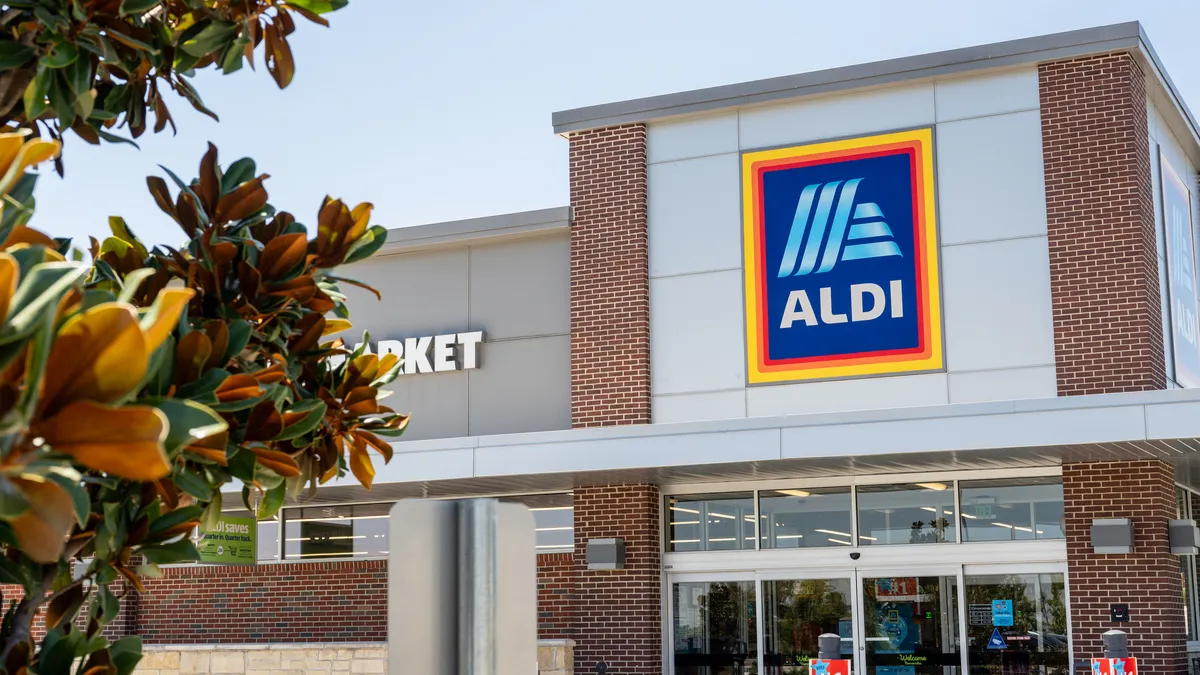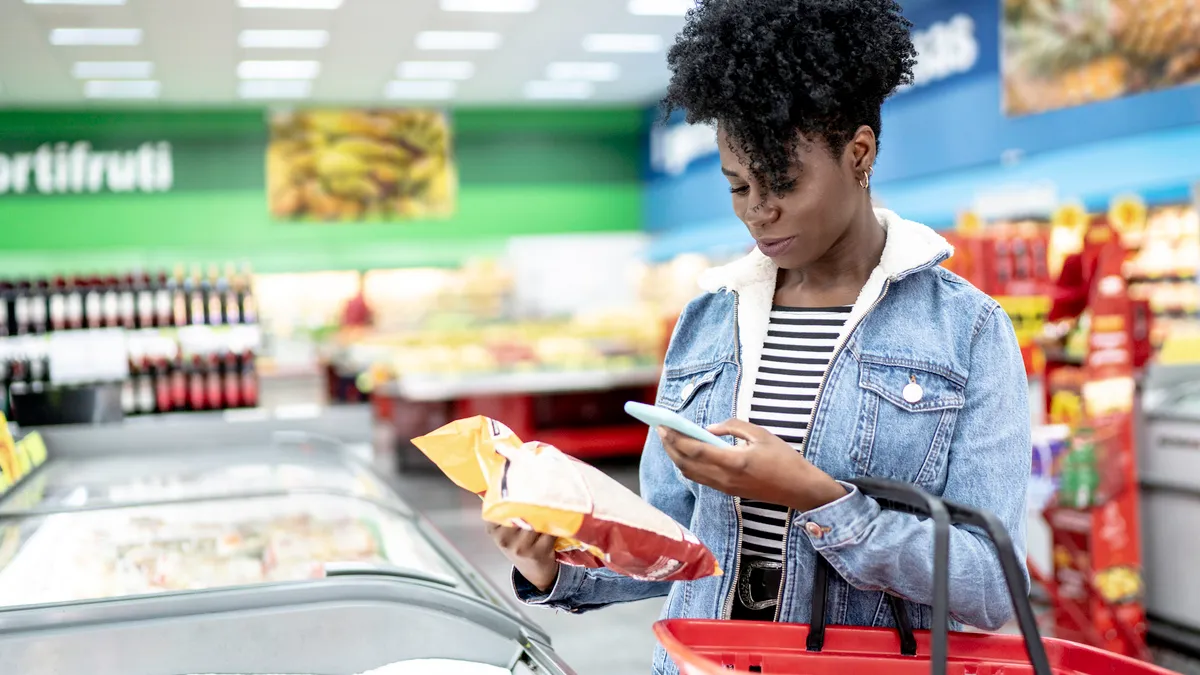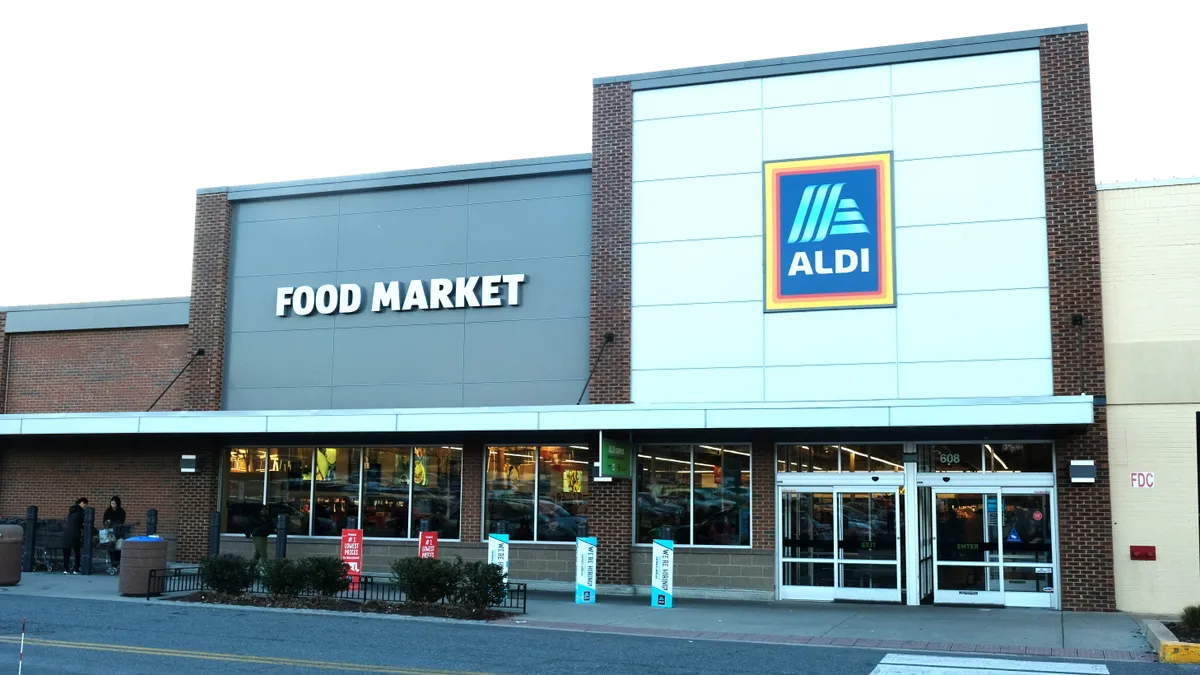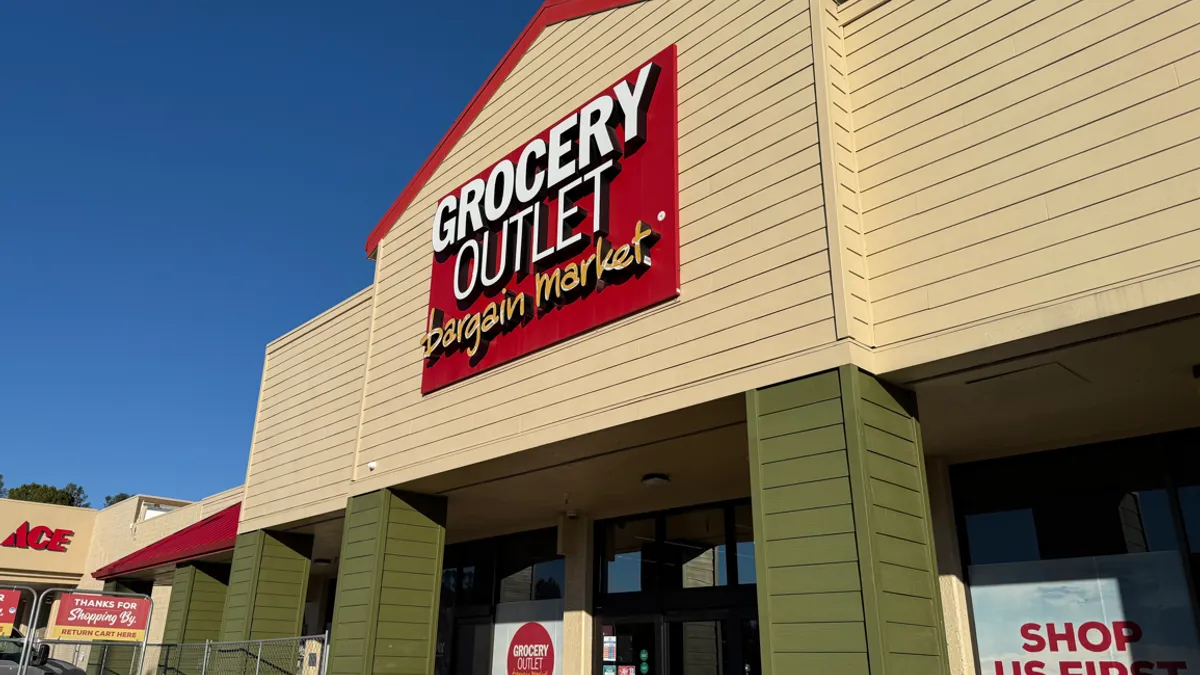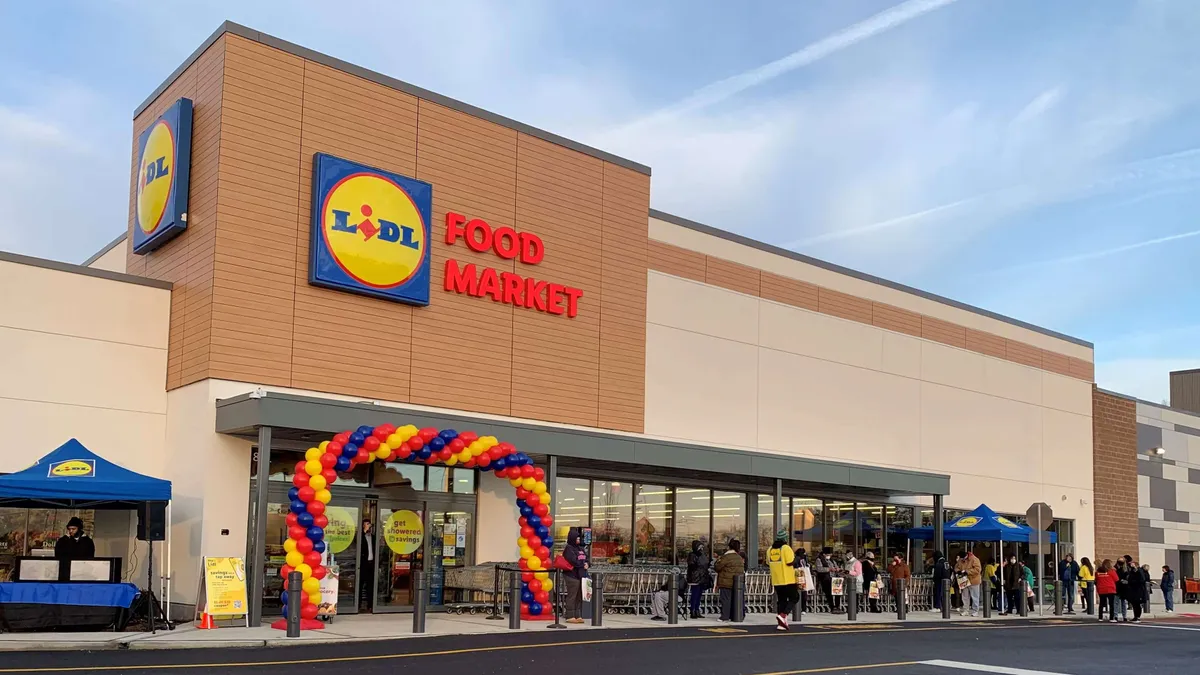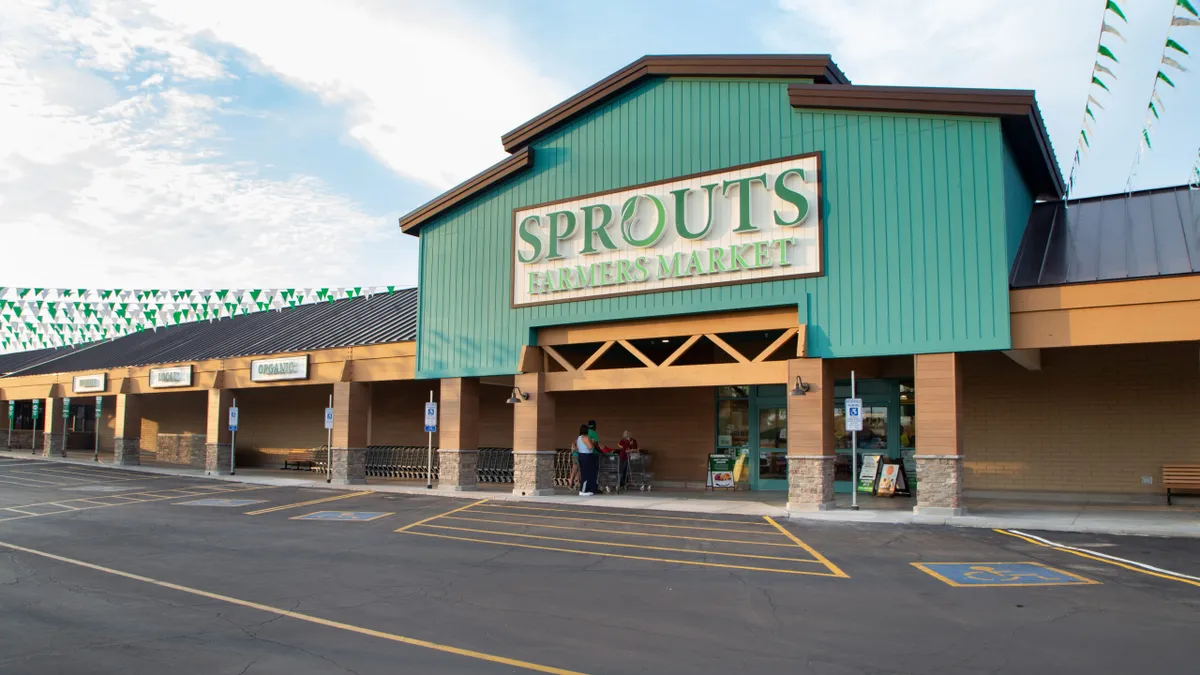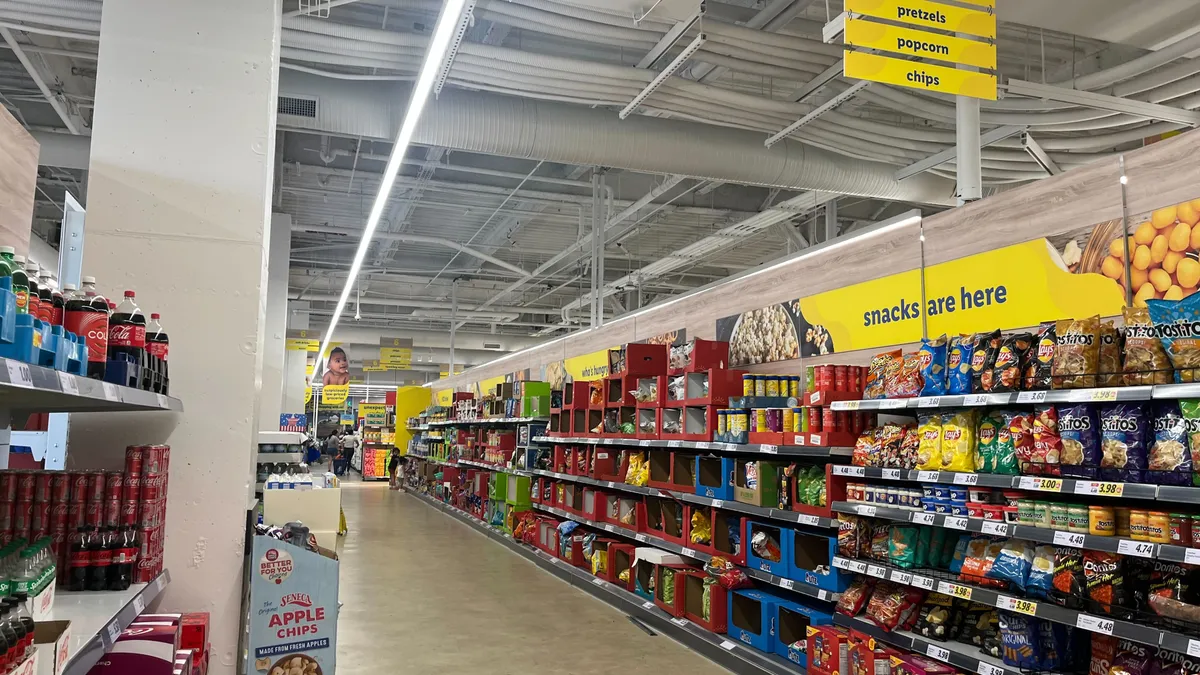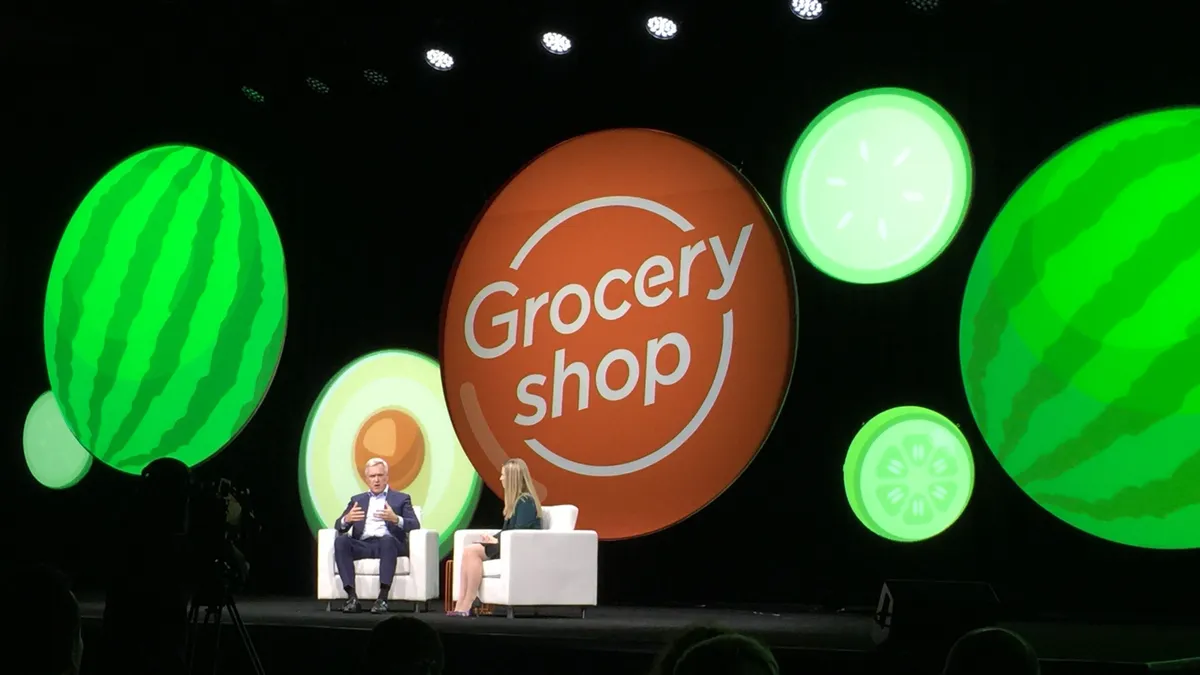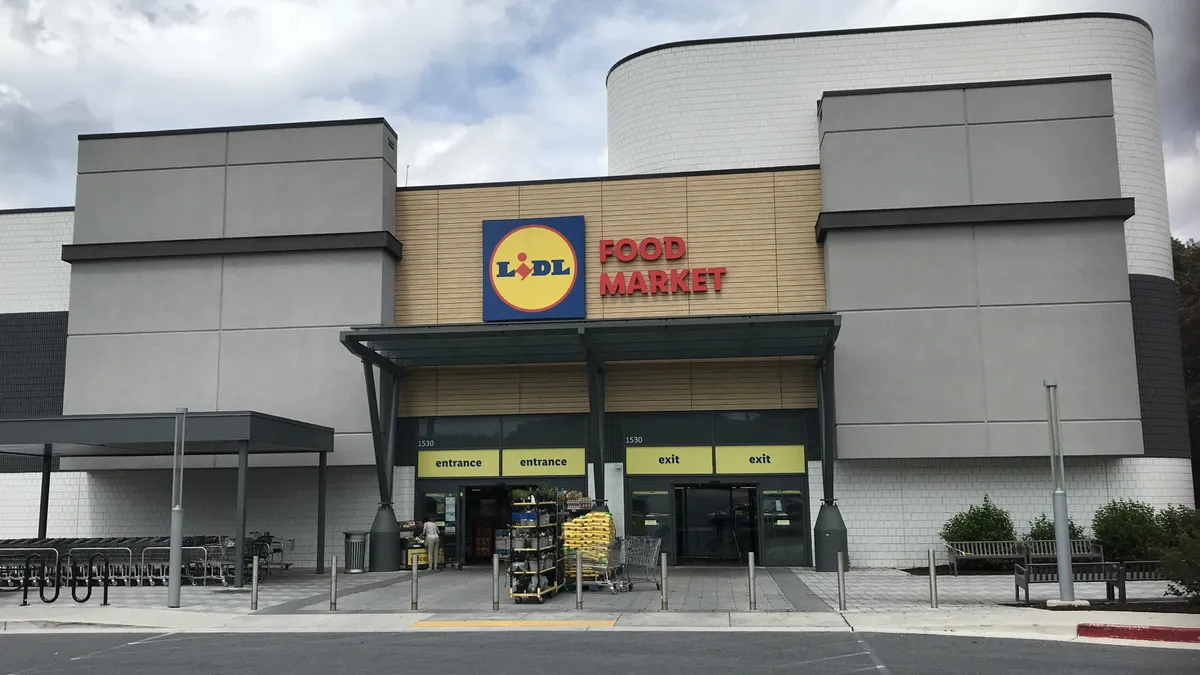Traditional supermarkets are poised to face stiffer competition from their discount grocer rivals in 2025 as these retailers continue to benefit from a shift in customer buying habits.
Increased reliance on discounters took root in 2020 at the height of the COVID-19 pandemic and cemented in the following periods of record-high inflation. In recent years, discounters have gone from being places to buy cheap products to offering compelling value on everyday necessities.
While Walmart remains a top competitor, discounters like Aldi, Lidl and Save A Lot have each queued themselves up for expansion this year.
Aldi announced in March intentions to add 800 new stores across the U.S. by the end of 2028, and industry experts expect the discounter’s acquisition of two Southeastern Grocers banners to fuel much of this $9 billion initiative. Meanwhile, Save A Lot is also quickly scaling its business with plans to triple its store count over the next few years. Throughout last year, the discounter grocer launched its first-ever loyalty program, debuted a Hispanic grocery store concept and bolstered its e-commerce reach by partnering with Uber.
Lidl’s recent marketing campaign rebrand aims to improve the chain’s name recognition and kickstart growth it has struggled to maintain since entering the U.S. in 2017.
While expanding their store counts was the main focus for discounters last year, industry experts anticipate more from these retailers in 2025 as they fight to maintain their current hold on both industry competition and consumers. Here’s what they said they expect to see from discount grocers in the year ahead.
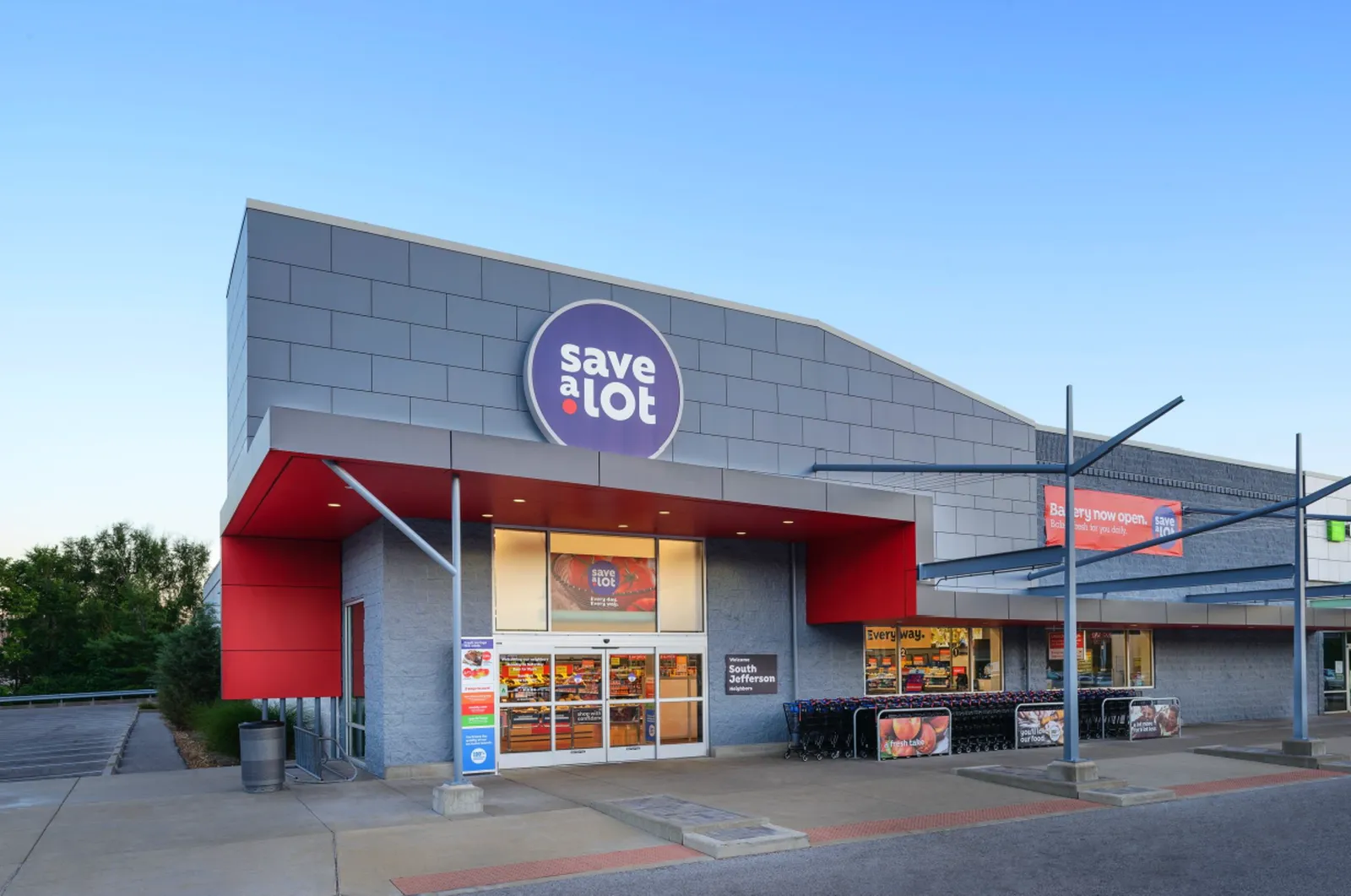
Less is more
Discounters have always had lower prices than other grocery formats, but they earned their value street-cred by offering “best choice” grocery essentials that meet consumers’ needs, according to Bobby Gibbs, a partner at Oliver Wyman.
“There’s a very loose connection between the number of SKUs a retailer offers and the perception of choice that they have,” Gibbs said, noting that most shoppers gravitate toward grocers with the most relevant products rather than those housing the largest quantity of goods.
Gibbs added that many shoppers are cooking simple recipes, leading them to only seek out basic meal staples like ground beef and boneless, skinless cuts of chicken. This in turn has made offerings like high-end cuts of beef “less relevant” to shoppers, he noted.
Discounters are also proving their value in fresh departments, often rivaling the fresh products available at traditional supermarkets, Gibbs said.
At the start of last year, Dollar General announced it made fresh fruits and vegetables available in more than 5,000 of its locations and, to further capitalize on this product growth, began deploying AI-based perishable food-ordering technology to the department.
Research published last year by the Boston Consulting Group found that discounters have been bolstering their customer reach through their fresh assortments paired with convenience. Industry experts noted that this is a trend discounters should continue to capitalize on as they build out their assortment of relevant, affordable grocery essentials.
This less-is-more approach discounters are proficient in also taps into shoppers’ ongoing price sensitivity — a trend that is not expected to lessen as 2025 continues to unfold.
Differentiating with private label
As crucial as low prices are to discounters’ customers, discounters still struggle to differentiate themselves — though private label expansion plays a crucial role in offering quality products at reduced prices, sources said.
Grocery Outlet, for example, is new to the private label game, but off to a strong start, said Amanda Lai, director of food industry practice at McMillanDoolittle.
The retailer’s private offerings include a mix of staples and newly added natural, organic, specialty and healthy products. In the second half of last year, Grocery Outlet introduced private brand goods to its beverage, grocery, dairy, household and baking categories.
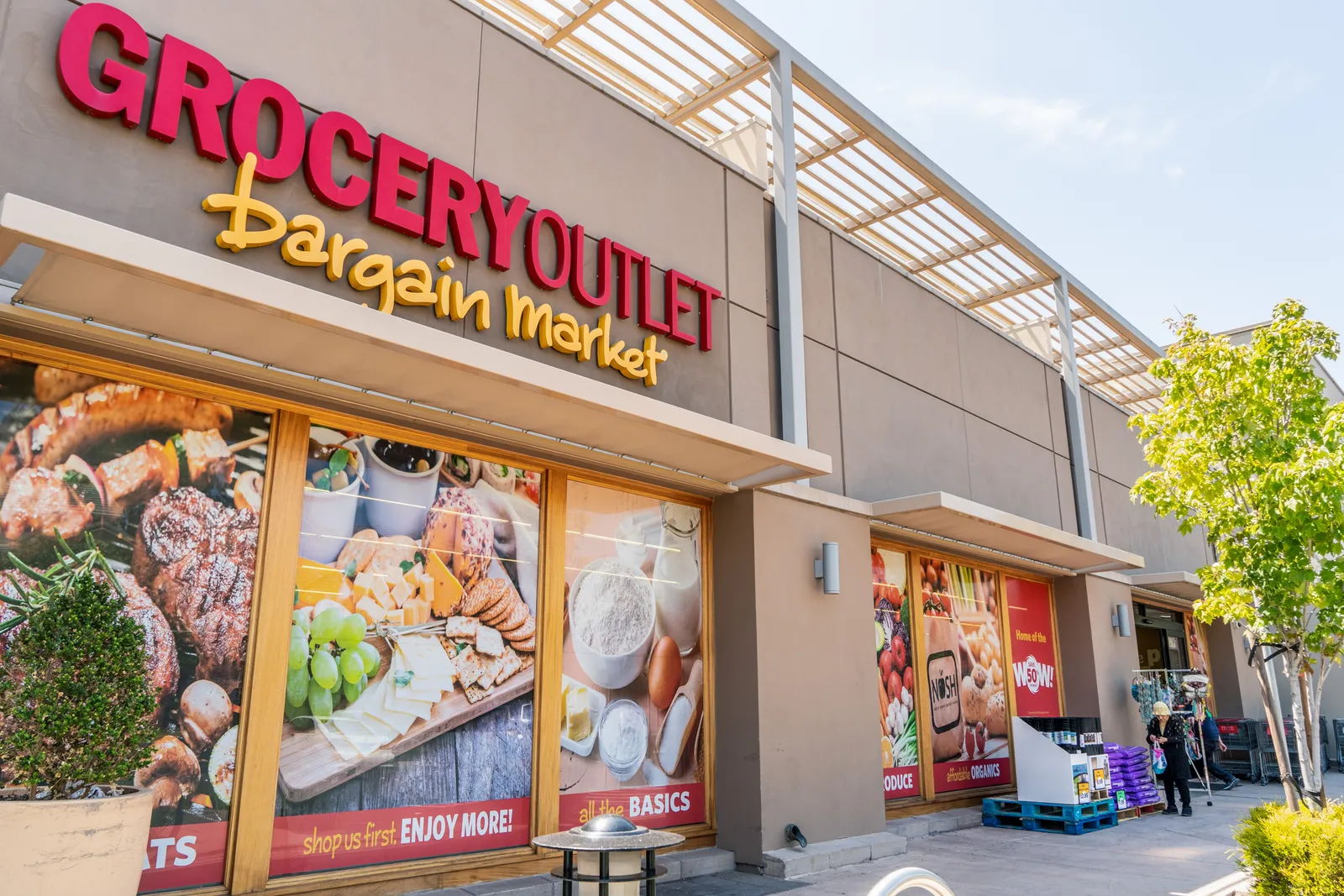
Grocery Outlet’s private label growth came in tandem with its national expansion in 2024. The chain closed out last year with 533 stores across 16 states after opening 57 locations in new East Coast markets, a spokesperson for the grocer said via email.
The discounter’s private label line aims to fuel its “treasure hunt” store experience, then-President and CEO R.J. Sheedy said when Grocery Outlet announced its lineup of new brand products last year.
This treasure hunt experience paired with the retailer’s willingness to tailor products by regional preference has positioned the discount grocer for success, Lai said, noting the chain is a competitor grocers should watch closely.
Lidl is another discounter ramping up its private label. When announcing the U.S. company-wide rebrand, Lidl Chief Customer Officer Frank Kerr said that the grocer’s business model is built around leveraging its private label offerings coupled with select national brands, making finding the right mix of products a top priority to achieve “the core of who we are.”
Last summer, Lidl revamped its meat department by adding new meat and poultry products, including the launch of a packaged meats brand called Butcher’s Specialty, and shifting how it merchandised those goods.
Customer service and store format experimentation
One area where discounters tend to lag traditional grocers is customer service. Discounters’ focus on efficiency often means there are fewer workers in stores, and those that are there usually focus on quickly stocking shelves and manning registers.
Gibbs certainly thinks there’s room for improvement. The more discounters can pivot employees’ priorities to creating a personal experience for customers, the easier it will be for the retailers to create a strong foundation of customer loyalty, he said.
Discounters can also take a page from grocers’ playbook this year and dabble more in alternative store formats, Lai said. Between Whole Foods Market’s new Daily Shop and the continued growth of Meijer Grocery, consumers are still gravitating towards scaled-down store concepts.
While discounters like Aldi and Lidl already operate stores that are smaller than traditional grocery locations, there could be opportunities to go even smaller.
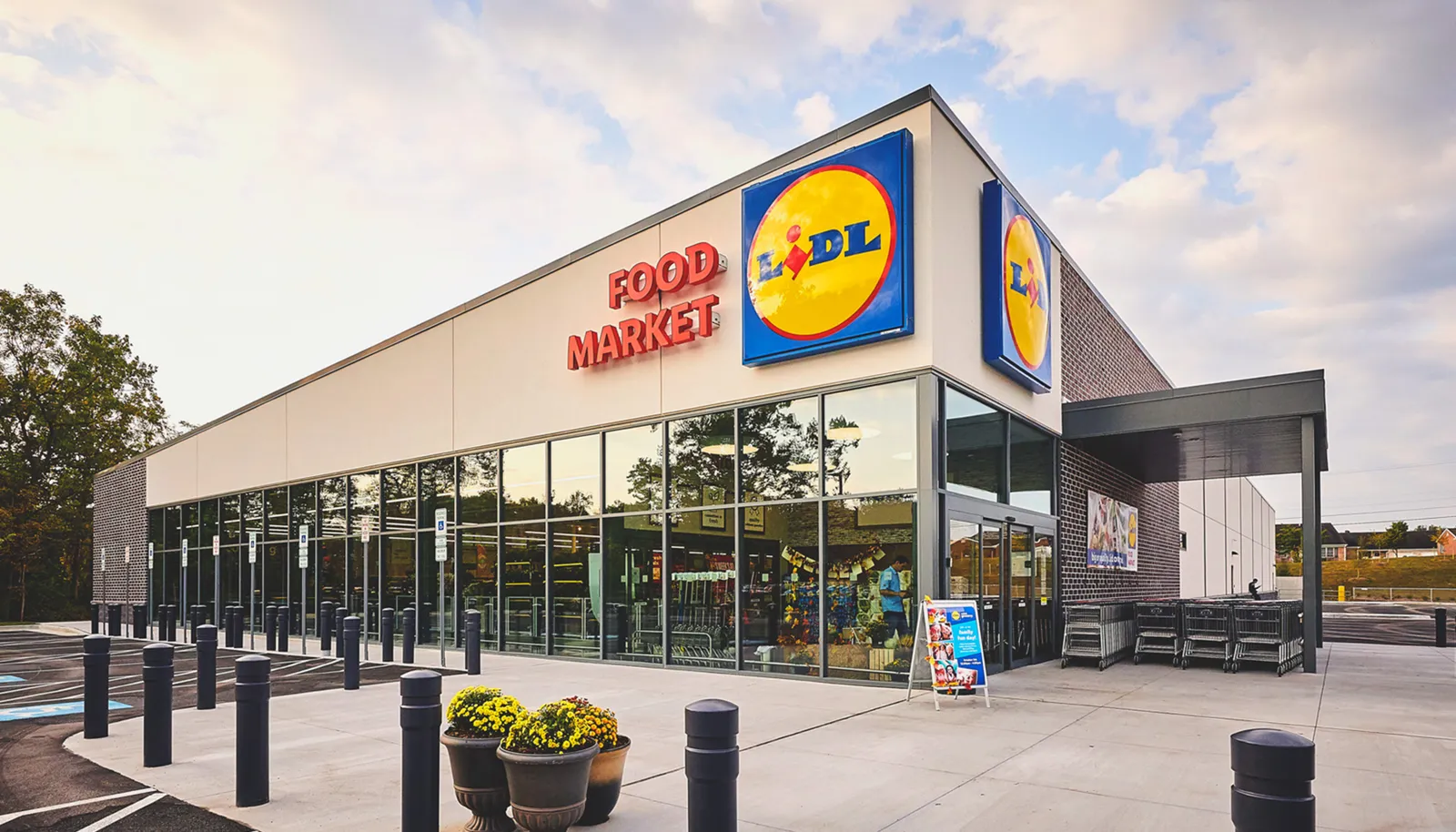
“Smaller formats are an area that’s worth exploring purely because of the economics of it,” Lai said. Small formats would allow discounters to save on labor, access more real estate opportunities, easily manage inventory and cost-effectively pilot technology — all of which play into the hand of improving the shopping experience, she said.
Smaller stores also pave the way for discounters to trial more flashy, consumer-facing technology like frictionless checkout and electronic shelf labels. However, she noted this move to front-end tech may not be a priority for discounters that are mainly focused on pricing and efficiency as shoppers continue to guard their wallets.
“This year emits a lot of uncertainty among some of the more conventional leaders with the Kroger-Albertsons fallout and just continued tightening of wallets among Americans,” said Lai. “It’s really the year for discounters to shine and differentiate and cement themselves into the daily routines of Americans.”



